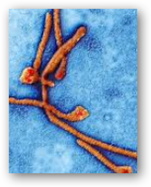The vaccine was already to test and had performed on animals at a rate of 100%, so what took so long even now to bring this out?  Researchers said in 2010 a product could be ready for licensing and it never happened. Now it is being tested in humans with a very basics test for safety.
Researchers said in 2010 a product could be ready for licensing and it never happened. Now it is being tested in humans with a very basics test for safety.
Things have changed now of course and there’s a scramble to get a vaccine out there. BD
GALVESTON, Tex. — Almost a decade ago, scientists from Canada and the United States reported that they had created a vaccine that was 100 percent effective in protecting monkeys against the Ebola virus. The results were published in a respected journal, and health officials called them exciting. The researchers said tests in people might start within two years, and a product could potentially be ready for licensing by 2010 or 2011.
It never happened. The vaccine sat on a shelf. Only now is it undergoing the most basic safety tests in humans — with nearly 5,000 people dead from Ebola and an epidemic raging out of control in West Africa.
Its development stalled in part because Ebola is rare, and until now, outbreaks had infected only a few hundred people at a time. But experts also acknowledge that the absence of follow-up on such a promising candidate reflects a broader failure to produce medicines and vaccines for diseases that afflict poor countries. Most drug companies have resisted spending the enormous sums needed to develop products useful mostly to countries with little ability to pay.
Now, as the growing epidemic devastates West Africa and is seen as a potential threat to other regions as well, governments and aid groups have begun to open their wallets. A flurry of research to test drugs and vaccines is underway, with studies starting for several candidates, including the vaccine produced nearly a decade ago.
A federal official said in an interview on Thursday that two large studies involving thousands of patients were planned to begin soon in West Africa, and were expected to be described in detail on Friday by the World Health Organization.
With no vaccines or proven drugs available, the stepped-up efforts are a desperate measure to stop a disease that has defied traditional means of containing it.
Dr. Geisbert moved on, working on treatments for Ebola and another version of the V.S.V. vaccine. For the vaccine work, his main collaborator has been Dr. Heinz Feldmann, the chief of virology at the Rocky Mountain Laboratories in Hamilton, Mont., part of the National Institute of Allergy and Infectious Diseases.



0 comments :
Post a Comment